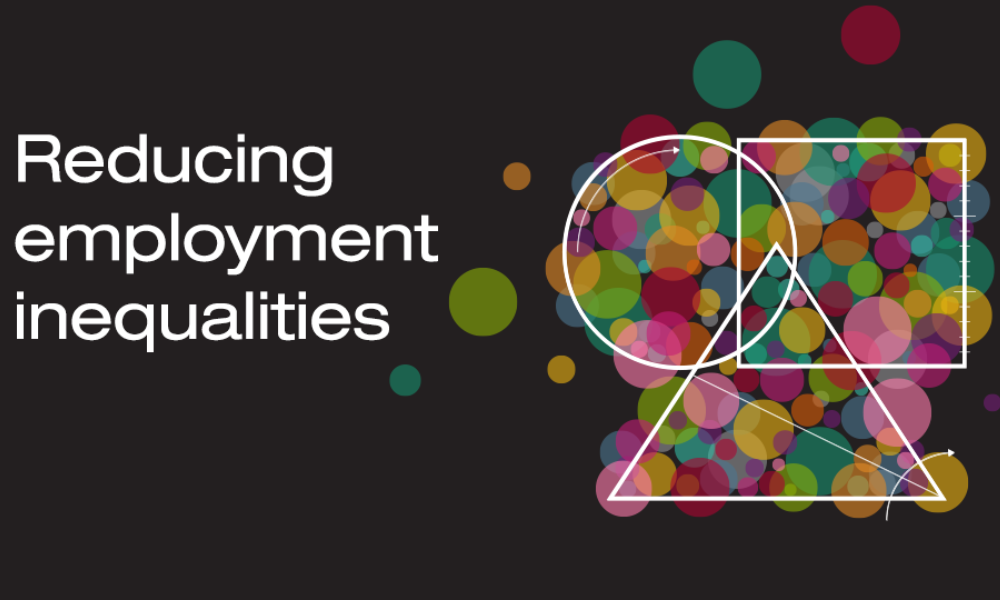
Building diverse, equitable, and inclusive work environments contributes to reducing employment inequalities

This article was provided by Normandin Beaudry
DEI is not a fixed-term initiative; it’s an approach that evolves with an organization and creates a workplace that fosters growth. It allows each individual’s uniqueness to shine, adding strategic value that stimulates business success and prosperity. Building diverse, equitable and inclusive work environments contributes to reducing employment inequalities―Normandin Beaudry’s societal commitment.
Now more than ever, DEI issues are at the forefront. In fact, a survey conducted by Normandin Beaudry uncovered that although 80% of organizations intend to implement a DEI strategy, only 30% have implemented a dedicated committee or resources.([1])
The gap between intent and action can mainly be explained by the lack of knowledge and expertise of interested parties, including employees, managers, and executives. Yet, knowledge is the driving force of a DEI strategy and has an impact on three levels: the understanding of relevant issues, the experiences of minoritized groups, and the strategy’s implementation stages.
Advancing DEI requires humility to grasp the full extent of what’s at stake, then ensuring consistency between words and actions. Four interrelated and complementary pillars are used to assess an organization’s DEI maturity and progress. This is achieved through four levels by aligning business strategies with DEI objectives, embedding inclusivity, and sustainability.
Questioning systems and adjusting internal and/or external programs and policies ensures the alignment of discourse, actions and results. Here are five strategies for a successful DEI initiative:
The key success factors of a DEI strategy are management’s involvement and commitment. This involvement must extend beyond adopting or communicating various programs and measures so that leaders can gain understanding and awareness of DEI issues within the organization and in society. DEI or human resources leaders must be management’s allies. Normandin Beaudry’s approach of openness, tolerance for errors and mutual respect has paved the way to greater diversity, equity, and inclusion.
Collectively, everyone can contribute to creating healthy, inclusive and high-performance work environments by going beyond rhetoric to translate values and intentions into concrete action. Strengthening the sense of belonging and celebrating differences are essential to fostering inclusion. It’s important to remember that this is a learning process that requires people to push their limits so that collective potential can be fully realized, one step at a time.

Mélinda Bastien, ASA, Durability specialist and Senior Principal, Savings and Investment Consulting practices
Mélinda has worked on Normandin Beaudry’s Investment Consulting and Pension and Savings teams since 2007. She has a wide range of experience in monitoring the performance of investment managers, and she has had the opportunity, over time, to serve clients of all sizes in many industries.
She helps organizations design, optimize and communicate their group savings plans. She works to reinvent traditional savings approaches to put employees’ financial health first. She is also the specialist in charge of the institutional sustainable investment team. Together with her clients, she develops and implements sustainable investment approaches that enable them to better identify the ESG risks in their portfolio but above all to seize new opportunities that will benefit the growing societal challenges of today and tomorrow.

Raja Abid, Ph.D., DEI specialist and Consultant, Performance practice
Raja has more than five years of experience in knowledge development in human resources management, corporate social responsibility, and diversity, equity and inclusion (DEI). She joined Normandin Beaudry in 2021 to contribute to the firm’s societal commitment of reducing employment inequalities. Prior to joining NB, Raja was a researcher at the Observatoire québécois des inégalités and conducted applied research, notably as part of her Ph.D. in industrial relations. She was also a lecturer at Université de Montréal and a speaker at numerous national and international conferences.
Her expertise focuses on supporting organizations in creating inclusive and equitable workplaces. Her work includes developing DEI assessment and best practice tools and delivering adapted training to assess and reduce employment inequalities. Recognized for her analytical skills and rigorous work methods, Raja leverages her background in finance to achieve a human-centric approach as well as sustainable and equitable organizational performance.
([1]) Source: Normandin Beaudry, remun survey, Talent and culture